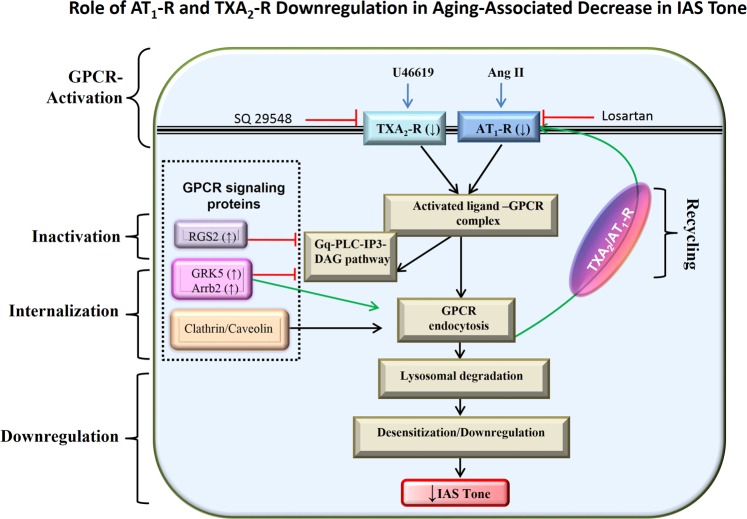Figure 8.
Schematic representation of TXA2-R and AT1-R downregulation in aging-associated decrease in IAS tone. Normally, GPCRs such as TXA2-R and AT1-R bind to the respective endogenous ligands responsible for the IAS tone to stimulate smooth muscle contraction through the IP3-DAG cascade, and then with the action of regulatory proteins they may be endocytosed and recycled back to the membrane. However, an increase in the Regulator of G-protein Signaling (RGS2) during aging may inactivate this GPCR signaling by acceleration of Gα hydrolysis, converting GTP to GDP. GPCR kinase5 (GRK5) by phosphorylating cytoplasmic tail of receptor stimulates receptor internalization via β-arrestin (Arrb2). These events may lead to downregulation of receptors, and combined with the GPCR lysosomal/proteasomal degradation and slower recycling may lead to functional desensitization of GPCR signal transduction by reducing the number of membrane receptors. These events may be primarily responsible for the aging-associated decrease in the IAS tone by compromise in Ca2+/calmodulin/MLCK/RhoA/ROCK.

